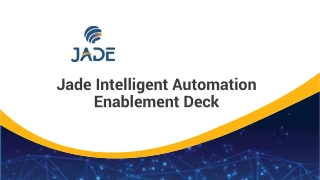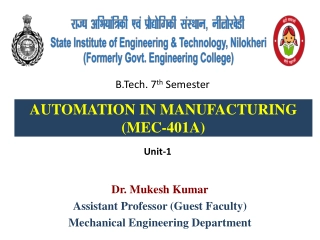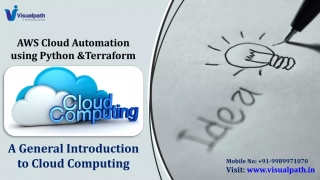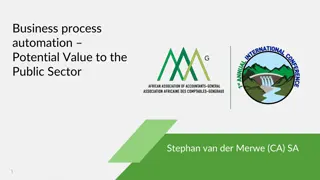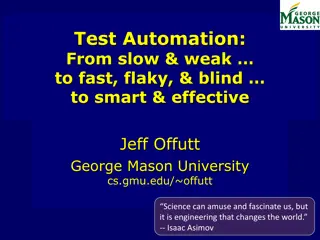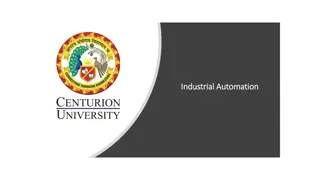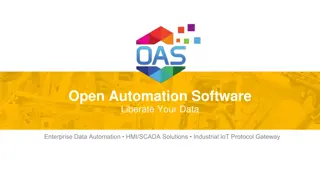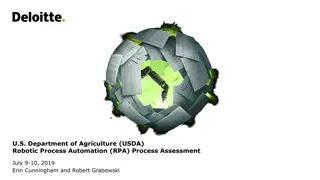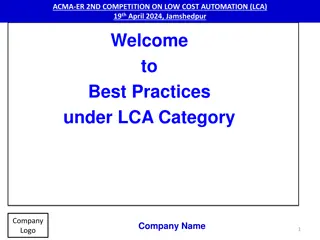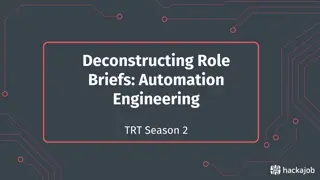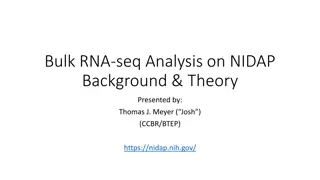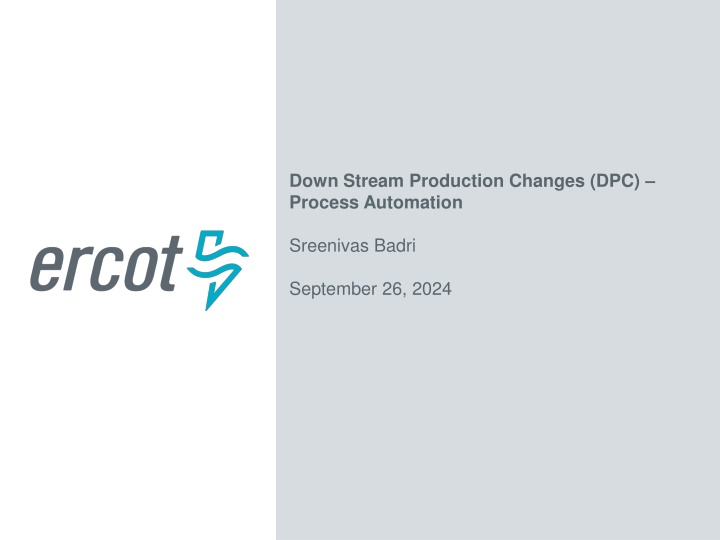
Downstream Production Changes (DPC) Automation Efforts
Downstream Production Changes (DPC) process at ERCOT involves making critical model updates without loading a new model, managed by multiple teams. The current manual DPC process demands significant collaboration efforts and resources, prompting the need for automation to enhance efficiency and accuracy.
Download Presentation

Please find below an Image/Link to download the presentation.
The content on the website is provided AS IS for your information and personal use only. It may not be sold, licensed, or shared on other websites without obtaining consent from the author. If you encounter any issues during the download, it is possible that the publisher has removed the file from their server.
You are allowed to download the files provided on this website for personal or commercial use, subject to the condition that they are used lawfully. All files are the property of their respective owners.
The content on the website is provided AS IS for your information and personal use only. It may not be sold, licensed, or shared on other websites without obtaining consent from the author.
E N D
Presentation Transcript
Down Stream Production Changes (DPC) Process Automation Sreenivas Badri September 26, 2024
Down Stream Production Changes (DPC) Process Automation Objectives of Today s Discussion o Present current DPC Process o Introduce DPC Automation effort concept and high-level implementation approach This effort provides new tool to Market Participants to facilitate DPC submission process. Plan to seek feedback from Market Participants through future NDSWG/TWG meetings on implementation approach. 2 PUBLIC
Down Stream Production Changes (DPC) Downstream Production Change (DPC) is a standard process that makes changes to the Network Model in production in between the weekly model loads without having to load a new model (database load). This process is managed by the multiple teams at ERCOT (Network Modeling, GMS, Shift Engineers, Operations etc.). DPC process helps update the network model in both Energy and Market Management systems (EMS and MMS) incorporating the changes submitted by the transmission operators that are critical to maintaining the reliability of the system. The DPC process allows ERCOT to make specific data modifications in real-time including: o Static Line / Transformers Ratings o Dynamic Line Ratings o Line / Transformer Impedance o Contingency Definition updates o Enabling and Disabling of Contingencies o GTC updates o RAP and RAS changes GTC and RAP/RAS definition updates related DPCs are submitted by ERCOT Operations team. 3 PUBLIC
Down Stream Production Changes (DPC) DPC process is intended to make model changes in production between weekly model loads as necessary, not for model changes that can follow normal NOCMR timelines. Current High level DPC Process Jira Process 1. Review and Approve by Operations team 2. Track DPC implementation in EMS/MMS systems across multiple models MP Review Model and Create DPC EMS/MMS NMMS (Submits Model changes for DPC) DPC process demands significant collaboration efforts between several departments within ERCOT and market participants. It requires significant amount of manual effort to create, validate, track and implement DPCs in multiple environments across multiple weekly model loads. The manual nature of DPC tasks often leads to inefficiencies, delays, and increased resource loading across several departments within ERCOT. This multifaceted process demands extensive time and resources to ensure accuracy and efficiency. 4 PUBLIC
Down Stream Production Changes (DPC) The need for automation has become increasingly evident as the volume of DPC changes processed by ERCOT continues to rise each year, driven by the substantial growth in the ERCOT system. 5 PUBLIC
New Automated DPC Process High level details Develop a new DPC tool to allow Market Participants submit DPCs with start and end times. ERCOT Operations will review and approve DPCs. Upon approval, DPCs get implemented in ERCOT real-time systems (EMS/MMS) automatically. Thereafter, DPCs get implemented automatically in EMS/MMS systems during every week model load until end time of DPCs. This new DPC tool will provide visibility to Market Participants on DPC implementation status in ERCOT EMS/MMS systems. Market Participants Operations team can submit DPCs with start and end times based on operational needs using this new DPC Tool without depending on their modeling team. It reduces the coordination efforts across multiple departments within Market Participants as well. New DPC Tool ERCOT Review & Approval MP (Submits DPC changes) EMS/MMS 6 PUBLIC
DPC Automation Implementation Approach Allow Market Participants submit only following DPCs using this new DPC tool if emergency data changes are required in ERCOT real-time systems (EMS/MMS) with immediate start time to mitigate reliability risks. o Contingency Enable and Disable o Static Line / Transformers Ratings o Dynamic Line Ratings o Line / Transformer Impedance If DPC is a permanent model change, DPC end time should reflect when this change will be available in production models. This type of DPC model change can be submitted to NMMS following normal NOMCR timelines. This creates clear demarcation between operational data changes and model changes of current DPC submission process. o Market Participants operations team can submit above DPC types if emergency data changes are required in ERCOT real-time systems. o Market Participants modeling team can continue to use current DPC process (using NMMS) to submit DPCs which are permanent model changes. 7 PUBLIC
Next Steps Seek feedback from Market Participants on implementation approach through future NDSWG/TWG meetings. Finalize the implementation approach based on Market Participants feed back. Perform Impact Analysis (IA) of this effort and determine implementation timelines. 8 PUBLIC


